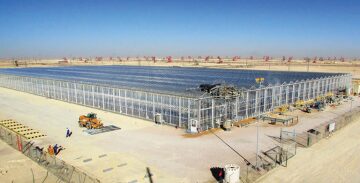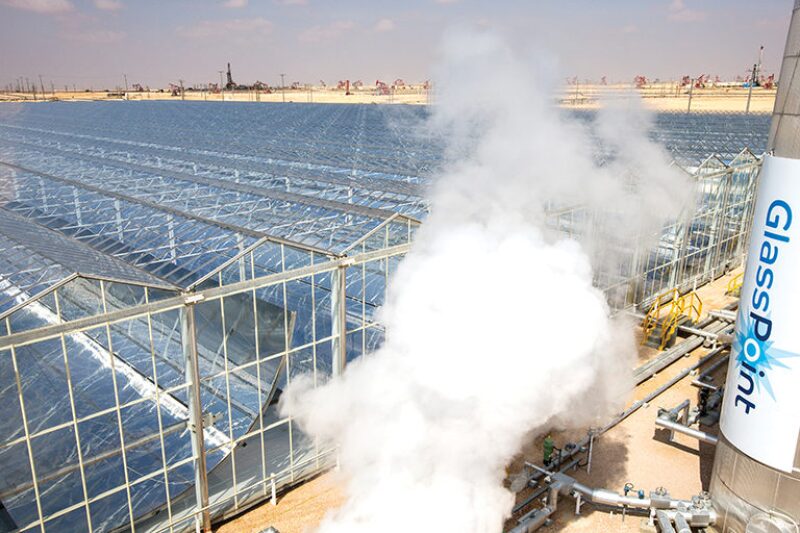Although famous for its abundant oil fields, generations of production in the Middle East is putting sharper focus on ultimate recovery from these fields.
The issue is particularly pressing for Oman. Output in the country’s maturing oil fields peaked in the 1990s and Petroleum Development Oman (PDO), the national oil company, spearheaded the implementation of enhanced oil recovery (EOR) techniques with its first trials in the late 1980s.
For Oman, EOR remains a major strategic option in its challenge to increase recovery and to meet long-term production requirements. Substantial efforts have been directed at investigating cost-effective ways in which production levels from existing fields can both be sustained and increased.
Oman’s first EOR program was completed in 1989 and led to progress in experience gained and reduction in technical and cost uncertainties. Oman has seen considerable investment in a range of EOR technologies to produce heavy oil, and a host of other countries in the Middle East and India have been encouraged by Oman’s success. Between 2001 and 2007, Oman’s oil production fell by 27%, but by 2009, due mostly to EOR projects, oil production had increased by 17%.
In a region where national oil companies essentially control all the hydrocarbon resources, Oman’s partnership between national and international oil companies stands out, also because it has been an important driving force behind the country’s EOR rollout. The growth in use of EOR techniques has increased the cost of Oman’s oil production but also has boosted output by 180,000 BOPD to 200,000 BOPD. Total Oman production is 940,000 BOPD. “In comparison with primary oil extraction, which sometimes costs only USD 4-5 per barrel, EOR techniques come at an expense of USD 10-12 per barrel,” said Salim bin Nasser Al-Aufi, undersecretary of the Ministry of Oil and Gas in Oman.
The EOR techniques that Oman has used include chemical EOR as well as thermal and miscible gas injection. The choice of EOR technology is based on the reservoir depth and oil viscosity.
PDO’s Experience
PDO, which produces more than 80% of Oman’s oil production, commissioned its first EOR project in 2004, and expects that EOR will contribute to 25% of total liquids production by 2020. “We have had to move into a significant program of EOR technologies. We are the only company in the world that has thermal, miscible, and polymer chemical-injection recovery mechanisms within the same concession, all of which are in full-scale implementation,” said Raoul Restucci, managing director of PDO.
The company announced earlier this year that it was executing 16 EOR field developments and trials. “As easy oil supplies dwindle, EOR is going to account for an increasing part of our production portfolio. PDO is already a world leader in this area, but we are now redoubling our efforts to ensure we maximize production from our fields,” Restucci said.
In 2013, PDO had major EOR developments at Marmul, Qarn Alam, Harweel (2AB), and Amal West, which is at an advanced stage of commissioning.
The company is studying and/or implementing other EOR pilot projects at the Fahud, Lakhwait, Nimr, Al Noor, Marmul, Amin, and Ghubar fields. “The impact on improved production and increased recovery has been significant, with the Marmul polymer project, for instance, delivering the highest production record in the 33-year life of the field in the last 2 years,” Restucci said.
Block 6, operated by PDO, is the center of current EOR operations, with the Marmul field (polymer), Harweel field (miscible), and Qarn Alam field (steam) using all three of the major EOR techniques within the same block. PDO and GlassPoint Solar completed the Middle East’s first solar EOR project in late 2012, and it was commissioned in May 2013.
The polymer project in Marmul reached 6.3 million bbl of incremental oil recovery in December 2013. The USD 175 million project is the first full-scale polymer project in Oman, and has raised the expected recovery rate from around 10% to between 20-30%. The principle of polymer flooding is to improve the reservoir sweep efficiency by flooding it with a mix of polyacrylamide and water. Adding polymer to the water increases its viscosity, bringing the ratio of mobility much closer to the crude oil, thus making a more effective sweep.
Another key EOR project in Oman is the Qarn Alam steam-injection project. PDO said this is the world’s first full-field thermally assisted gas/oil gravity drainage development, which has been implemented at the Qarn Alam fractured carbonate reservoir and promises significant increase in field production rate and ultimate recovery. The field came on stream in November 2011 and first oil was in March 2012.
Qarn Alam is a fractured carbonate field containing heavy oil. Unlike a normal steamflood, steam is used as a heating agent to enhance existing gas/oil gravity drainage by lowering the viscosity of the oil. “The benefit is clearly demonstrated by the fact that this recovery process is on track to increase the recovery factor tenfold from 3% to over 30%. This is exceptional for any EOR project,” said Sultan Al-Rubaie, project manager at PDO.
In the Harweel oil field, PDO uses miscible gas-injection EOR, which involves pumping gas that dissolves in the oil, facilitating higher flow rates. As a result, Harweel produced an additional 23,000 BOPD in 2012 with predictions that production could increase another 30,000 BOPD in the near term.
PDO and GlassPoint teamed up to create Oman’s first solar EOR project. Thermal EOR is a technique used to facilitate the recovery of heavy oil with the injection of high-pressure steam, which can increase the temperature of oil reserves and change reservoir consistency. By harnessing the sun’s energy with GlassPoint’s enclosed trough technology, the solar EOR project produces a daily average of 50 tons of emissions-free steam that can be fed directly into existing thermal EOR operations at PDO’s Amal West field in southern Oman.

By incorporating solar steam, PDO can significantly reduce the amount of natural gas it burns to produce steam for EOR. GlassPoint’s technology can cut natural gas used for EOR by up to 80%, helping Oman save its natural gas resources for higher-value applications such as power generation, desalination, industrial development, or export as LNG.
“Preliminary results from this project demonstrate that solar steam generated with GlassPoint’s enclosed trough architecture is equally effective as natural gas for thermal EOR,” Syham Bentouati, head of new technology implementation at PDO was quoted as saying by local media. “This unit serves as a performance and operational baseline for future solar steam-generation projects in Oman, providing us with valuable information for planning potential future large-scale solar steam projects.”
Foreign companies are also taking part in EOR development in Oman. Occidental Petroleum, operator of the Mukhaizna field in south central Oman, implemented a steamflood project that uses a modified steam-assisted gravity drainage approach with vertical steam injectors around horizontal producers. Between mid-2005 and early 2010, gross daily production increased by more than 10 times, with total production recently exceeding 100,000 BOPD for the first time. The project was the first operating full-field steam injection project in Oman.
What Next?
Oman’s EOR success may not be easily transferable to neighboring countries; its difficult geology and difficult terrains present challenges not found in other countries in the region. “The obstacles we face are underpinned by the complexity of Oman’s fields, arguably 10-15 years ahead in life cycle, from primary to secondary and now tertiary production, compared with other fields in the Middle East,” Restucci said.
Many other fields in the region are going through the secondary phase of production and have not reached or required tertiary recovery mechanisms yet. When they reach this stage of field maturity and incremental recovery challenge, companies will require technical and operating expertise, execution knowhow, and various technologies that are extensively available in Oman. “There is no doubt that Oman is, and will be, a center of excellence and source of talent and operational experience in EOR techniques that the Middle East will benefit from,” Restucci said.
The Omani government is boosting investments in EOR technologies through its State General Reserve Fund. It announced that it will make a USD 53 million equity investment to accelerate the deployment of GlassPoint’s solar steam generators. Royal Dutch Shell and GlassPoint are also participating in this investment.

